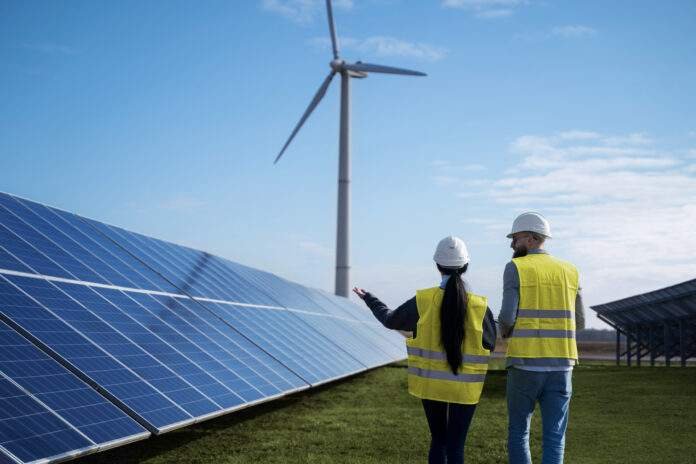India stands on the cusp of an energy revolution, driven by remarkable advancements in renewable energy technologies. As the world’s third-largest energy consumer, India’s transition to sustainable energy sources is critical not only for reducing carbon emissions but also for ensuring energy security for its burgeoning population. This article delves into the latest innovations in renewable energy that are poised to transform India’s energy landscape. Our focus keyword for this article is “renewable energy technologies in India.”
Solar Power: Shining Brightly the Renewable Sector
Solar energy continues to dominate the renewable sector in India. The country boasts one of the highest solar potentials in the world, with an average of 300 sunny days annually. Recent advancements in photovoltaic (PV) technology are making solar power more efficient and cost-effective.
Perovskite Solar Cells: These next-generation cells offer higher efficiency at a lower cost compared to traditional silicon-based cells. Indian research institutions and startups are actively working on scaling up the production of perovskite cells, which promise to significantly reduce the cost of solar energy.
Floating Solar Farms: With limited land availability, India is innovating by developing floating solar farms on reservoirs and water bodies. These installations reduce water evaporation and generate clean energy without occupying valuable land resources.
Wind Energy: Harnessing the Breeze
India’s vast coastline and expansive rural areas make it ideal for wind energy. Technological advancements are enhancing the efficiency and reliability of wind power.
Offshore Wind Farms: Moving beyond onshore installations, offshore wind farms are gaining traction. These farms, located in bodies of water, benefit from stronger and more consistent winds, leading to higher energy output. The Ministry of New and Renewable Energy (MNRE) is actively promoting offshore wind projects, particularly along the Gujarat and Tamil Nadu coasts.
Advanced Turbine Technology: Modern wind turbines are equipped with larger blades and taller towers, allowing them to capture more wind and generate more power. Innovations such as gearless turbines and improved blade designs are also reducing maintenance costs and increasing lifespan.
Biomass Energy: Tapping Agricultural Residues
India’s agrarian economy produces vast quantities of agricultural residues that can be converted into energy. Biomass energy is emerging as a viable solution for waste management and energy generation.
Biomass Gasification: This technology converts agricultural waste into a combustible gas mixture, which can be used to generate electricity. Indian startups are pioneering small-scale gasification plants, providing a decentralized energy solution for rural areas.
Bioenergy Crops: Researchers are developing high-yield bioenergy crops that can be cultivated on marginal lands, not suitable for food production. These crops can provide a continuous supply of biomass for energy generation without competing with food resources.
Hydropower: Small is Beautiful
While large hydropower projects have been a staple of India’s renewable energy mix, small and micro-hydropower projects are gaining attention for their minimal environmental impact and ability to serve remote communities.
Run-of-the-River Projects: Unlike traditional dams, these projects do not require large reservoirs, thereby reducing ecological disruption. They harness the natural flow of rivers to generate power, making them an environmentally friendly option.
Pico Hydropower: For extremely remote areas, pico hydropower (systems under 5 kW) can provide a reliable source of electricity. These systems are easy to install and maintain, making them ideal for off-grid locations.
Energy Storage: The Game Changer
One of the biggest challenges in renewable energy is its intermittent nature. Energy storage technologies are crucial for ensuring a stable and reliable power supply.
Lithium-Ion Batteries: Already a mainstay in the renewable energy sector, lithium-ion batteries are becoming more affordable and efficient. India’s push to establish domestic manufacturing of these batteries will reduce dependency on imports and drive down costs.
Flow Batteries: These batteries offer a promising solution for large-scale energy storage due to their long lifespan and scalability. Research and pilot projects in India are exploring the feasibility of integrating flow batteries with solar and wind farms.
Policy and Investment: Catalysts for Growth
Government policies and investments are pivotal in accelerating the adoption of renewable energy technologies in India. The National Solar Mission, wind energy auctions, and favorable tariff policies have created a conducive environment for renewable energy growth.
Foreign Investments: India is attracting significant foreign investment in its renewable energy sector. International collaborations are bringing advanced technologies and expertise to Indian shores, further propelling the industry forward.
Research and Development: Increased funding for R&D is driving innovation in renewable energy technologies. Indian universities and research institutes are at the forefront of developing cutting-edge solutions tailored to the country’s unique needs.
Conclusion
India’s renewable energy sector is undergoing a transformative phase, driven by technological advancements and supportive policies. As the country strides towards its ambitious renewable energy targets, the integration of these cutting-edge technologies will be crucial. Embracing these innovations will not only help in meeting energy demands sustainably but also position India as a global leader in renewable energy technologies. The future of energy in India is indeed bright, green, and powered by the relentless march of innovation.
By focusing on the continuous development and adoption of renewable energy technologies, India is set to achieve a sustainable and secure energy future.
Also read: AUTONOMOUS VEHICLES: HOW SAFE ARE THEY FOR INDIA’S ROADS?













